Camille Bauer Sineax V624 Handleiding
Camille Bauer
Niet gecategoriseerd
Sineax V624
Bekijk gratis de handleiding van Camille Bauer Sineax V624 (4 pagina’s), behorend tot de categorie Niet gecategoriseerd. Deze gids werd als nuttig beoordeeld door 129 mensen en kreeg gemiddeld 4.7 sterren uit 65 reviews. Heb je een vraag over Camille Bauer Sineax V624 of wil je andere gebruikers van dit product iets vragen? Stel een vraag
Pagina 1/4

1
Contents
1. Read fi rst and then ...............................................................................1
2. Scope of supply ....................................................................................1
3. Brief description ....................................................................................1
4. Technical data .......................................................................................1
5. Mounting ...............................................................................................2
6. Electrical connections ...........................................................................2
7. Confi guring the transmitter ...................................................................3
8. Commissioning .....................................................................................4
9. Maintenance .........................................................................................4
10. Releasing the transmitter ......................................................................4
11. Dimensional drawings ...........................................................................4
12. Declaration of conformity ......................................................................4
1. Read fi rst and then …
The proper and safe operation of the device assumes that the
Operating Instructions are read and the safety warnings given
in the various Sections
5. Mounting
6. Electrical connections
7. Confi guring the transmitter
8. Commissioning
are .observed
The device should only be handled by appropriately trained personnel who
are familiar with it and authorised to work in electrical installations.
Unauthorized repair or alteration of the unit invalidates the warranty!
2. Scope of supply (Figs. 1 and 2)
Transmitter, one of the two versions (1)
Order-Code: Signifi cance of the 1st to 4th digits
Description Order Code
1. Housing 624 -
Housing with screw terminals, not pluggable 3
Housing with screw terminals, pluggable 9
2. Version / Power supply
Standard/Power supply 24 … 60 V DC, AC 1
Standard/Power supply 85 … 230 V DC, AC 2
[Ex ia Ga] IIC and [Ex ia Da] IIIC
Power supply 24 … 60 V DC, AC
3
[Ex ia Ga] IIC and [Ex ia Da] IIIC
Power supply 85…110 V DC, 85…230 V AC
4
3. Output variable
Current (end value max. 20 mA) 1
Voltage (end value max. 10 V) 2
4. Confi guration
Basic confi guration programmed 0
Confi gured to order 1
Programmable
Temperature
Transmitter
SINEAX V 624
V624 Be 142 159-05 05.15
Camille Bauer Metrawatt LTD
Aargauerstrasse 7
CH-5610 Wohlen/Switzerland
Phone +41 56 618 21 11
Fax +41 56 618 21 21
info@cbmag.com
www.camillebauer.com
Operating Instructions
The instruments must only be disposed of in the
correct way!
Safety precautions to be strictly observed are marked with following
symbols in the Operating Instructions:
Fig. 1 Fig. 2
1 Operating Instructions (2) each in German, French and English
1 Type Examination Certifi cate (3), only for “Intrinsically safe” explosion-
proof devices
3. Brief description
The programmable SINEAX V624 is designed for measuring temperature in
combination with thermocouples or resistance thermometers. Thermocouple
non-linearities are automatically compensated.
The input variable and measuring range are programmed with the aid of a PC, a
programming cable and the corresponding software. Specifi c measured variable
data such as output signal, transmission characteristics, active direction and
open-circuit sensor supervision data can also be programmed.
The sensor circuit is monitored for open and short-circuits and the output
responds in a defi ned manner if one is detected.
Explosion-proof “Intrinsically safe” [Ex ia Ga] IIC and [Ex ia Da] IIIC versions
rounds off the series of transmitters.
Transmitters supplied as standard versions are confi gured as follows:
– Measuring input:
– Measuring range:
– Measuring output:
– Open-circuit supervision:
– Mains ripple suppression:
Pt100 for wire connectionthree-
0 … 600 °C
4 … 20 mA resp. 0 … 10 V, acc. to order
Output 21.6 mA resp. 11 V, acc. to order
50 Hz
4. Technical data
Measuring input Input variable and measuring range confi gured
Input variables
Measuring ranges
Limits Min.
span
Max.
span
Temperatures with
resistance thermometers
for ortwo, three
four-wire connection
Pt100, IEC 60751 – 200 to 850 °C 50 K 850 K
Ni100, DIN 43760 – 60 to 250 °C 50 K 250 K
Temperatures with
thermocouples
Type B, E, J, K, N, R, S, T
acc. to IEC 60584-1
Type L and U, DIN 43710
Type W5 Re/W26 Re,
Type W3 Re/W25 Re
acc. to ASTM E 988-90
acc. to type 2 mV 80 mV
(1)
(2)
(3)

2
Cold junction compensation
Internal: With incorporated Pt100
or
with Pt100 connected to the terminals
External: Via cold junction thermostat
0 … 60 °C, confi gurable
Measuring output
DC current*: Confi gurable between
0 and 20 resp. 20 and 0 mA
minimum span 2 mA
External resistance: Rext max. 600 Ω with 20 mA output
DC voltage*: Confi gurable between
0 and 10 resp. 10 and 0 V
minimum span 1 V
Load capacity: Rext min. 2 kΩ with 10 V output
Programming connector on the transmitter
Interface: RS 232 C
Open and short-circuit sensor circuit supervision
Signalling modes: Output signal confi gurable to…
… the value the output had immediately prior to
the open or short-circuit** (hold value)
… a value between – 5 and 110% of output
span
Power supply
DC, AC power pack (DC or 50…400 Hz)
Rated voltages and permissible variations
Nominal voltage UNTolerance Instruments version
24 … 60 V DC, AC DC – 15 … + 33%
AC ± 15% Standard (Non-Ex)
85 … 230 V*** DC, AC
24 … 60 V DC, AC DC – 15 … + 33%
AC ± 15% Type of protection
“Intrinsic safety”
[Ex ia Ga] IIC
[Ex ia Da] IIIC
85 … 230 V AC ± 10%
85 … 110 V DC – 15 … + 10%
Power consumption: 1.0 W resp. 2.1 VA
Light emitting diodes
Green LED: Light after switching on the power supply
Intrinsically safe
Type examination certifi cate: ZELM 00 ATEX 0027 and 1st supplement
Identifi cation: II (1)G [Ex ia Ga] IIC
II (1)D [Ex ia Da] IIIC
5. Mounting
The SINEAX V624 can be mounted on a top-hat rail.
When deciding where to install the transmitter (measuring
location), take care that the limits of the operating tempe-
rature are kept:
– 25 and + 55 °C
* The type of output variable (current or voltage) is not confi gurable
** The short-circuit indicator is only active for the RTD ≥ 100 Ω at 0 °C,
three and four-wire measuring mode
*** Caution! Observe note in Section 6.3.
Table 1: Measuring input
Simply clip the device onto the top-hat rail (EN 50022) (see Fig. 3).
Fig. 3. Mounting onto top-hat rail 35 15 or 35 7.5 mm.× ×
6. Electrical connections
The connections for the leads are fi xed or plug-in screw terminals, depending
on the device execution. These are easily accessible at the front of the trans-
mitter and are suitable for a wire cross-section of max. 2.5 mm
2.
Make sure that the cables are not live when making the
connections!
The 230 V power supply is
potentially dangerous.
Also note that, …
… the data required to carry out the prescribed measurement
must correspond to those marked on the nameplate of
SINEAX V624 ( measuring input, measuring output
and power supply)!
… the resistance in the output circuit may not the overrange
current output value
Rext max. [kΩ] = 12 V
IAN [mA]
(IAN = current output value)
and not underrange the voltage output value
Rext min. [kΩ] = UAN [V]
5 mA
(UAN = voltage output value)!
… the measurement input and output cables should be twisted
pairs and run as far as possible away from heavy current
cables!
In all other respects, observe all local regulations when selecting
the type of electrical cable and installing them!
In the case of explosion-proof, the supple-“Intrinsically safe”
mentary information given on the type examination certifi cati-
on, the EN 60079-14 and also local regulations applicable to
electrical installation in explosion hazard areas must be taken
into account!
6.1 Alternative measurement connections
Connect the measuring leads to suit the application as given in Table 1.
ϑ
Rw1
Rw2
ϑϑϑ
2
1
4
TC
Internal
cold junction
compensation
with incorporated
Pt100
TC
Internal
cold junction
compensation
with Pt100
connected to
the terminals
TC
External
cold junction
compensation
RTD
Four-wire
connection
RTD
Three-wire
connection
RTD
Two-wire
connection
ON
Green LED for
operating status
5
1 2
4 5
7 8
10
11 12
3
6
9
ON
2
1
4
5
2
1
4
5
2
1
4
5
2
1
4
5
2
1

3
Notes:
6.1.1 Connection to thermocouples
Pay attention to correct polarity when connecting thermocouples. If the
lead from the thermocouple to the transmitter has to be extended, be sure
to use thermally compensated leads suitable for the particular type of ther-
mocouple.
6.1.1.1 cold junction compensation, with incorporated Pt100Internal
Connect terminals
2
and
4
when using internal compensation by com-
parison.
Set the confi guration software to “internal thermo-element” and “Pt100 built-in”.
6.1.1.2 I cold junction compensation with Pt100 connected to the nternal
terminals
For this alternative, a Pt100 is connected to terminals
2
and
5
. Terminals
4
and
5
must be connected.
Set the confi guration software to “internal thermo-element” and “Pt100 on
terminals”.
6.1.1.3 cold junction compensationExternal
Be sure to confi gure the reference temperature when using a cold junction
thermostat. The cold junction thermostat is connected to the transmitter by
copper wire leads.
6.1.2 Connection to resistance thermometer
6.1.2.1 Two-wire connection
Terminals
1
and
2
and
4
and
5
must be connected in the case of a
two-wire measurement.
The lead resistance must not be greater than 30 Ω per lead.
6.1.2.2 wire connection Three-
Terminals
4
and
5
must be connected in the case of a three-wire mea-
surement. It is not necessary to compensate the leads, providing the three
leads have identical resistances. The lead resistance must not be greater
than 30 Ω per lead.
6.1.2.3 Four-wire connection
The four-wire measurement is independent of lead resistance within wide
limits and therefore no compensation is necessary. The lead resistance must
not be greater than 30 Ω per lead.
6.2 Measuring output leads
Connect the output leads for terminals
7
(–) and
8
(+) as shown in
Fig. 4.
Note, the maximum permissible external resistance R
ext max. at current
output, resp. Rext min. at voltage output of the transmitter must
not be exceeded (see Section “4. Technical data”).
7 8
+–
Fig. 4. Measuring output connection.
6.3 Connecting the power supply
Connect the power supply to terminals
10
( –
~) and
11
( +
~) as shown
in Fig. 5.
10 11
+– –
Fig. 5. Power supply connection.
A two-pole switch must be included in the supply connection where facility
for switching SINEAX V624 off is desired.
Note: An external supply fuse must be provided for DC supply voltages
> 125 V.
7. Confi guring the transmitter
The transmitter is confi gured via the serial interface of a PC. An advantage of
the confi guration procedure is that it can be carried out regardless of whether
the power supply is connected to the transmitter or not.
The following accessories are required …
… Confi guration software V 600 (Order No. 146 557)plus
(Download free of charge under http://www.camillebauer.com)
… Programming cable PK610 (Order No. 137 887)
… Ancillary cable for SINEAX type V624 (Order No. 141 416)
A PC with an RS232C interface and Windows 3.1x or higher is also required.
The confi guration procedure and choice of parameters is explained by the
menu-guided confi guration program.
Safe area
Programming
connector
Interface
SINEAX V624
PK610
Ancillary cable
11 12
78 9
GOSSEN
METRAWATT
CAMILLE BAUER
V624
OFF: Connect
separate
power supply to
SINEAX
ON: Power supply
provided by PC
OFF
ON
Fig. 6. Confi guring a SINEAX V624 without the power supply. For this case the
switch on the interface must be set to “ON”.
Sensor V624 PK610
Hazardous area Safe area
Fig. 7. Confi guring the SINEAX V624, types 624-33/34/93/94, when the sensor is
in the hazardous area. For this case the switch on the interface of the PK610 must
be set to “ON” or “OFF”, see Fig. 6.
The earthing conditions must be observed when programming
the instrument, (e.g. the instrument is installed in the plant).
If one of the input wires is earthed, a PC without an earth
connection must be used when programming (e.g. a notebook
running on the batteries).
Under no circumstances should a PC be used running from
a power supply with an earth connection, as this will damage
the transducer.
For devices of the explosion protection type “intrinsically
safe”, the PC or laptop must support a voltage level of 500 Veff
between the RS232 interface and earth (e.g. battery operation).
In particular, check other peripheral devices that are connected.
If the above voltage level is not supported (e.g. operation from the
mains power supply) the earth connection of the programming
cable PK610 must be connected to the potential equalization
conductor. At the same time, it must be ensured that the pro-
gramming circuit of the V624 is potential free.
Fig. 8. Connect the earth Fig. 9. Remove the earth
connection to the PK610 connection from the PK610
interface. interface.
Product specificaties
| Merk: | Camille Bauer |
| Categorie: | Niet gecategoriseerd |
| Model: | Sineax V624 |
Heb je hulp nodig?
Als je hulp nodig hebt met Camille Bauer Sineax V624 stel dan hieronder een vraag en andere gebruikers zullen je antwoorden
Handleiding Niet gecategoriseerd Camille Bauer
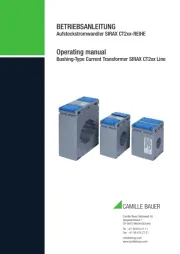
24 Mei 2025
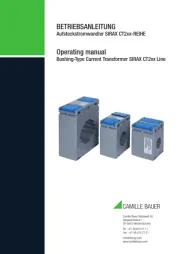
24 Mei 2025
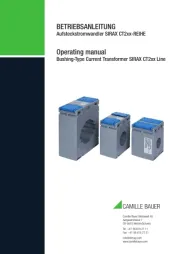
24 Mei 2025
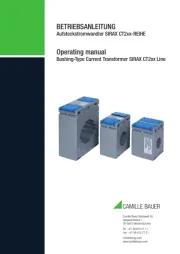
24 Mei 2025

8 Januari 2025

2 Februari 2024

2 Februari 2024

2 Februari 2024

2 Februari 2024

2 Februari 2024
Handleiding Niet gecategoriseerd
- Monzana
- MagTek
- Milestone Systems
- Wallas
- Intel
- Ferroli
- ProFlo
- Merax
- Discover
- Hohem
- Prowise
- AMS Office
- SWIT
- Moser
- Dimavery
Nieuwste handleidingen voor Niet gecategoriseerd
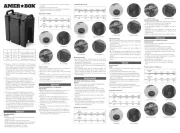
20 September 2025
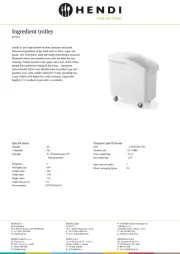
20 September 2025
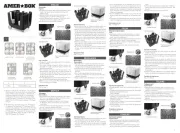
20 September 2025
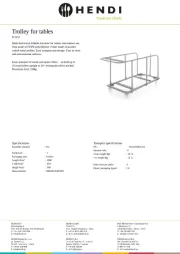
20 September 2025
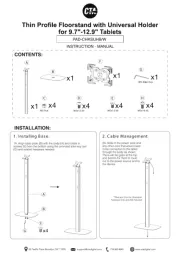
20 September 2025
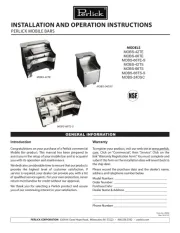
20 September 2025
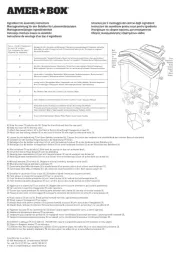
19 September 2025
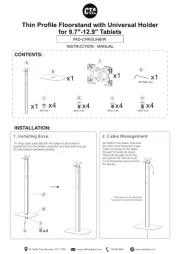
19 September 2025
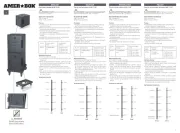
19 September 2025
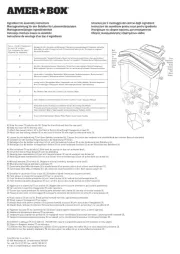
19 September 2025